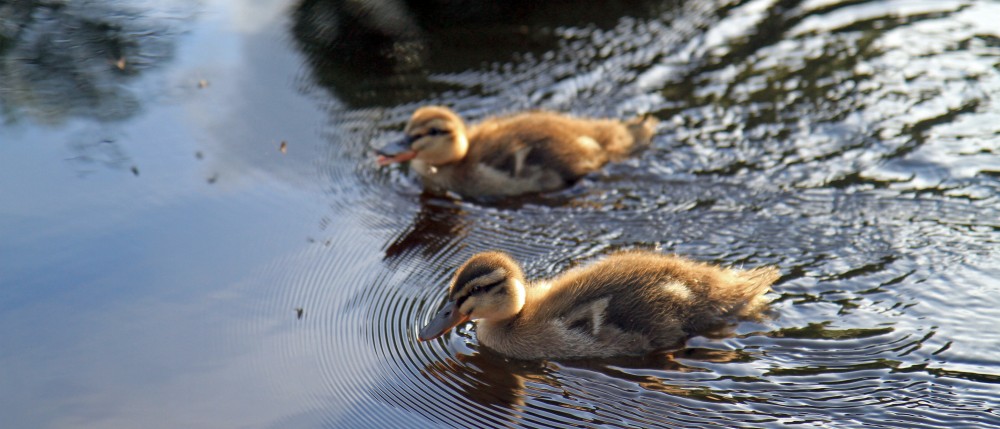 The life of teal is a life on the wing. It is the smallest dabbling duck in the Boreal zone, but in terms of migration it covers huge distances from breeding waters to the non-breeding areas far, far away. The same bird can spend time in an oligotrophic lake in Russia during breeding, a brackish Baltic Sea lagoon or a tidal mudflat in the Atlantic coast during autumn, and a rich river delta in the Mediterranean in winter – and some individuals even straddle over into North Africa for a dabble. It takes a lot of adaptability to switch between such vastly different habitats, and at the same time avoid becoming dinner of arial predators and human hunters.
The life of teal is a life on the wing. It is the smallest dabbling duck in the Boreal zone, but in terms of migration it covers huge distances from breeding waters to the non-breeding areas far, far away. The same bird can spend time in an oligotrophic lake in Russia during breeding, a brackish Baltic Sea lagoon or a tidal mudflat in the Atlantic coast during autumn, and a rich river delta in the Mediterranean in winter – and some individuals even straddle over into North Africa for a dabble. It takes a lot of adaptability to switch between such vastly different habitats, and at the same time avoid becoming dinner of arial predators and human hunters.
This book – The Teal by Matthieu Guillemain and Johan Elmberg published in 2014 – is part of a long tradition of monographs in ornithology, and a must for everyone with love for ducks. It’s clear from the writing that the authors hold their study species dear, and each part of the annual cycle is covered in well-written informative chapters.
Because of hunting, ducks have long been a focus of research and there’s a huge body of literature on many aspects of duck ecology. However, it is not easy accessible, either because it is old, or that it has been published in journals with a narrow scope. Here the authors have done a massive job to summarize tons of hard-to-get information in text, as well as tables and appendixes. Although most readers will not spend too much time on the appendixes, they serve as reference when you need it. For instance, if you want to know the helminth fauna detected in Teal, you can peruse appendix 8 – a full 7 pages of wormy stuff, or for a list of food items turn to appendix 6.
Although the book is written in the scientific tradition and heavily referenced, it is still a fairly easy read with clear chapter distinctions and a number of boxes for specific questions. You get to know both the Eurasian Teal and the North American sister species Green-winged Teal – which are extremely similar in apperance and ecology, but with rather different research history. The book devotes one chapter to distribution and numbers, one to movements and migrations, one to foraging and diet and one to breeding ecology. From there the book turns to mortality, demography, harvesting and conservation, before ending in a list of priorities for future research.
The teal is facinating bird and The Teal is a very good book. When reading it, it struck me how much I have yet to learn even though I have studied ducks professionally for several years. My main study species is the mallard, which although bigger and not as migratory share many traits with the teal, and knowledge presented in this book is valuable for all dabbling ducks. My largest knowledge gaps was the breeding and foraging ecology parts, and I am grateful for filling those by reading the book. But there are so many other aspects of teals that are facinating, including the apperant ease of long-distance migration despite generally not putting on large food reserves, or the intricate pair forming and sex life of ducks – and the very large hunting bags and their impact on population demography and numbers.
Thus, this book fills two purposes: as a general read for anyone interested in ducks, and a specialized reference book for researchers. It was published in 2014 and if you haven’t bought it yet, you should. Especially, I think this book is an essential read if you’re into avian influenza, to widen the horizon of the ecology of one of the virus’ main hosts. An increased understanding on the life history of dabbling ducks would go a long way to clear some misunderstandings that the field is laden with.

A pair of American Wigeons are about to land next to a pair of Eurasian Wigeons and mr and mrs Green-winged Teals.
